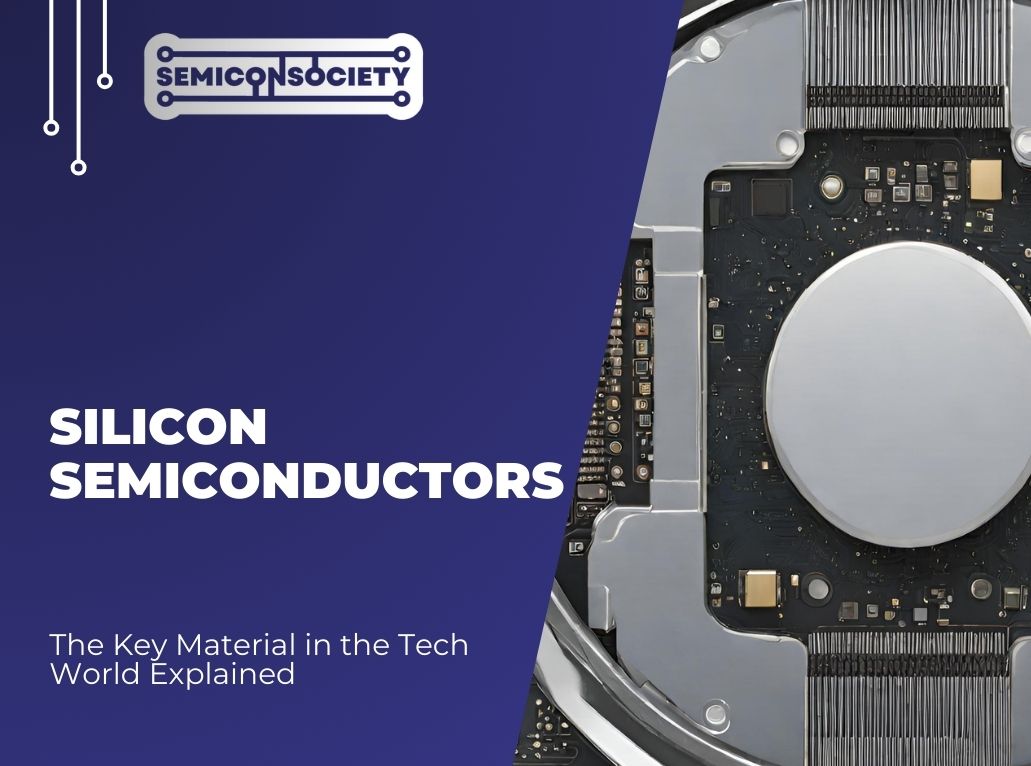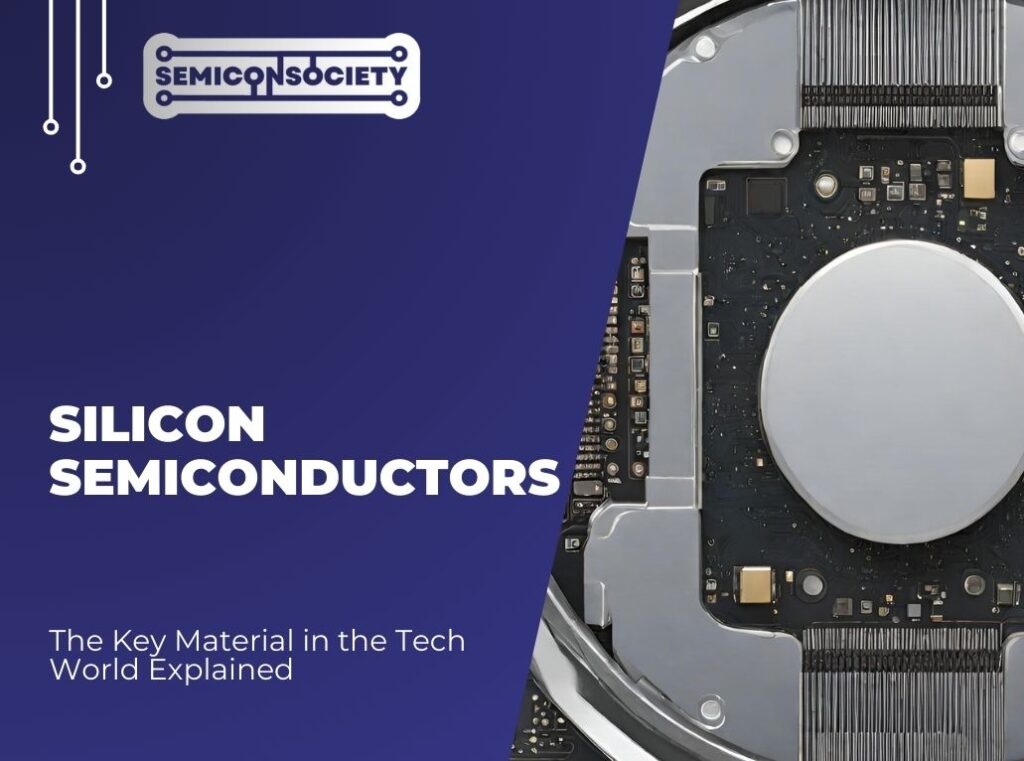Newsletter Subscribe
Enter your email address below and subscribe to our newsletter
Enter your email address below and subscribe to our newsletter

Silicon semiconductors are the unsung heroes of the technology world, playing a crucial role in everything from transistors to solar cells. In this comprehensive article, we will explore the different types of silicon semiconductors, their advantages and disadvantages, and their role in electronics.

We will also delve into how they work in transistors, solar cells, and integrated circuits, as well as their future applications and the challenges in working with them. So, if you’ve ever been curious about the technology behind your favorite gadgets, keep reading to discover the key material that powers the tech world.
Silicon semiconductors are a crucial component in modern technology, used in a variety of devices such as transistors, solar cells, and integrated circuits.Despite their widespread use, silicon semiconductors have both advantages and disadvantages, and face challenges in their production and implementation.Their remarkable properties, cost-effectiveness, and potential for future applications make silicon semiconductors the key material in the tech world.
.jpg)
Silicon semiconductors are essential components in the digital age, playing a pivotal role in the semiconductor revolution and driving the growth of the silicon market.
These semiconductors are integral to the functioning of electronic devices, such as computers, smartphones, and industrial machinery.
The ability of silicon semiconductors to conduct electricity under certain conditions has revolutionized the electronics industry, enabling the miniaturization of circuitry and the development of more efficient and powerful devices.
The demand for silicon semiconductors continues to surge as new applications, such as Internet of Things (IoT) devices and renewable energy technologies, rely heavily on their performance and reliability.
With the ongoing advancements in manufacturing processes and the integration of innovative materials, the market for silicon semiconductors is poised for sustained growth and technological breakthroughs.
.jpg)
Silicon semiconductors find diverse applications in technology, including power electronics and solar cells, contributing to the advancement of the renewable energy industry.
Silicon semiconductors encompass diverse types, including semiconductor rectifiers, silicon transistors, and the innovative silicon carbide technology.
The semiconductor rectifiers are crucial for converting alternating current (AC) to direct current (DC) in various electronic devices.
On the other hand, silicon transistors serve as fundamental components in amplifying or switching electronic signals in a wide range of applications.
With the rise of silicon carbide technology, there have been significant advancements in high-power, high-frequency applications, paving the way for more efficient energy conversion and electronic systems.
The use of silicon semiconductors offers notable advantages, including power efficiency and fostering technological innovation in the semiconductor revolution.
Being one of the most abundant elements in the Earth’s crust, silicon is widely recognized for its versatile attributes, making it an ideal material for semiconductors. Its unique properties enable the development of high-performance electronic devices while also reducing power consumption, thus contributing to energy efficiency.
The scalability of silicon technology has facilitated continuous miniaturization, paving the way for groundbreaking advancements in various industries from electronics to renewable energy.
Despite their significance, silicon semiconductors exhibit limitations, including material constraints related to thermal conductivity and electrical resistance.
Silicon, although widely used, faces challenges with increasing miniaturization and performance demands. The material limitations of silicon semiconductors hinder their ability to effectively dissipate heat, leading to thermal conductivity challenges and potential overheating issues.
As electronic devices become smaller and more powerful, the electrical resistance within silicon semiconductors becomes a limiting factor, affecting their overall efficiency. These drawbacks highlight the need for alternative materials and innovative technologies in the semiconductor industry.
.jpg)
Silicon semiconductors play a pivotal role in the electronics industry, serving as the fundamental component in devices such as the computer microprocessor, driving the digital transformation.
Silicon semiconductors facilitate the operation of transistors, enabling essential functions such as amplification and digital signal processing in electronic devices.
These semiconductors play a pivotal role in controlling the flow of electrical currents within a transistor. By manipulating the movement of electrons, silicon semiconductors can modulate and amplify electronic signals, allowing for efficient transmission and processing of digital information.
This fundamental function is essential for the operation of numerous electronic devices, including computers, smartphones, and audio amplifiers.
Silicon semiconductors form the core of solar cells, harnessing the photovoltaic effect and driving advancements in renewable energy technologies.
The utilization of silicon semiconductors in solar cells is pivotal to their functionality. Through the photovoltaic effect, these semiconductors enable the conversion of sunlight into electricity.
This facilitates the generation of clean and sustainable energy, with significant implications for advancing renewable energy technologies. The widespread adoption of silicon-based solar cells contributes to reducing reliance on conventional energy sources and mitigating environmental impacts.
Silicon semiconductors drive the functionality of integrated circuits, enabling the miniaturization and enhanced performance of various electronic devices.
Silicon semiconductors have unique properties that make them essential in the creation of microchips. These microchips power a wide range of devices, from smartphones and computers to medical equipment and automotive systems. By controlling the flow of electrical current, silicon semiconductors enable the creation of complex circuits in a small space, leading to the development of increasingly powerful and compact electronic products.
The continuous improvement in performance of silicon semiconductors has been crucial in meeting the growing demand for smaller and more efficient devices in various industries. In short, the significance of silicon semiconductors in integrated circuits cannot be overstated, as they continue to drive innovation and technological advancements.
.jpg)
Silicon semiconductors stand as the key material in the tech world, driving technological advancements and shaping the global silicon market.
Comparing silicon semiconductors to other semiconductor materials provides insights into their unique properties and suitability for diverse electronic applications.
Silicon semiconductors offer several advantages over other materials commonly used in electronic devices. Their excellent stability, abundant availability, and relatively low cost make them highly desirable for mass production.
Silicon’s compatibility with complementary metal-oxide-semiconductor (CMOS) technology enables the development of smaller, more energy-efficient devices. This has resulted in silicon becoming the dominant material in the semiconductor industry, driving advancements in various electronic applications such as integrated circuits, solar cells, and sensors.
Anticipating the future applications of silicon semiconductors involves envisioning their role in driving technological innovation and supporting emerging technologies.
Advancements in artificial intelligence and machine learning, along with the proliferation of Internet of Things (IoT) devices, have positioned silicon semiconductors to revolutionize various sectors. These semiconductors offer high efficiency and miniaturization potential, making them crucial for the development of faster and more reliable computing systems. They enable the creation of complex algorithms and efficient data processing. Additionally, as the demand for energy-efficient solutions grows, silicon semiconductors are expected to play a vital role in facilitating the growth of renewable energy technologies, such as solar panels and energy storage systems.
.jpg)
Working with silicon semiconductors presents challenges related to material constraints, manufacturing complexities, and technological limitations that require innovative solutions.
One of the major material constraints in silicon semiconductor technology is the limited scaling of traditional CMOS transistors, leading to power leakage and heat dissipation issues.
The manufacturing process involves intricate steps such as photolithography, etching, and doping, which demand high precision and pose yield challenges. Existing technological limitations, including the peripheral component interconnect (PCI) bottleneck, hinder the performance enhancement of silicon-based devices.
Enhancing the use of silicon semiconductors involves pursuing avenues for performance improvement, material innovation, and manufacturing efficiency.
One strategy for enhancing performance is utilizing advanced lithography techniques to create smaller and more efficient circuits.
Exploring novel semiconductor materials such as graphene or gallium nitride can revolutionize the industry.
Introducing robotic automation in manufacturing processes can significantly improve efficiency and reduce production costs.https://www.youtube.com/embed/Bu52CE55BN0
Silicon semiconductors are materials made of silicon atoms that have been manipulated to have specific electronic properties. They are important in the tech world because they are the key material used in the production of electronic devices such as computers, smartphones, and other electronic gadgets.
Silicon semiconductors have a unique property where they can act as both a conductor and an insulator. This is controlled by adding impurities, or dopants, to the silicon material. These impurities either add or remove electrons, creating areas of negative or positive charge, which allows for the flow of electricity.
One of the main benefits of using silicon semiconductors is their reliability and durability. They are able to withstand high temperatures, making them suitable for use in various electronic devices. They also have the ability to switch between conducting and insulating states, making them essential for creating complex circuits.
Silicon semiconductors are typically produced through a process called the Czochralski method, where a single crystal of silicon is grown from a molten state. This crystal is then cut into thin wafers and processed further to add the necessary impurities for electronic applications.
While silicon semiconductors are the most commonly used material in the tech world, there are alternative materials such as gallium arsenide, gallium nitride, and indium phosphide. These materials have different properties and are used in specific applications, but silicon semiconductors remain the most widely used due to their cost-effectiveness and abundance.
The development of silicon semiconductors has been a key driving force in the advancement of technology. As researchers continue to improve and innovate new ways to manipulate and use silicon, we can expect to see even more powerful and efficient electronic devices in the future.